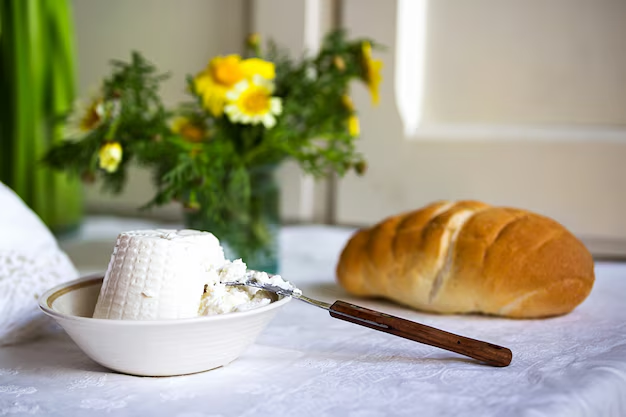The Butter Dilemma: Should You Keep It Out of the Fridge?
There's a certain culinary magic to butter. Its creamy texture and rich flavor make it a staple in kitchens around the globe. But a common debate persists among both novice cooks and seasoned chefs: Can you leave butter out of the refrigerator? Understanding the intricacies of butter's storage can help you keep this precious ingredient at its best for cooking and baking adventures. Let's explore this topic in detail, highlighting key points and practical guidance for butter storage.
🥐 Understanding Butter: Composition and Types
Before diving into storage practices, it's useful to understand what butter is made of and the variations available:
The Basics of Butter
- Composition: Butter is primarily made of butterfat, milk solids, and water. Standard butter comprises about 80% fat, with the remaining 20% being a mix of milk solids and water.
- Role in Cooking: Its composition lends itself to creating rich flavors and tender textures in both sweet and savory dishes.
Types of Butter
- Salted Butter: Contains added salt, which can act as a natural preservative. This type might withstand room temperature better for short periods.
- Unsalted Butter: Offers a pure, sweet flavor ideal for baking and recipes where precise control over salt levels is needed.
- Clarified Butter/Ghee: This type has been processed to remove water and milk solids, extending its shelf life and making it more stable at room temperature.
🧈 The Science of Butter Storage
Butter's ability to be stored outside the refrigerator largely hinges on several factors, including temperature, exposure to light, and packaging.
Room Temperature Storage
- Why Consider it?: Spreading cold, rock-hard butter on toast can be frustrating, hence the appeal of room-temperature butter.
- Safety Insights: Butter contains a high-fat content and, depending on the salt content, may resist bacterial growth for a limited period.
Storage Duration
- Short-Term Storage: At room temperature, you can typically keep butter outside the fridge for a day or two without significant risk, especially in cooler climates and if it's salted butter.
- Long-Term Storage: For prolonged freshness, refrigerating butter is advisable. If stored correctly, it can last several months.
Factors Affecting Shelf Life
- Temperature: Warm temperatures can cause butter to spoil faster. It should ideally be kept in a place cooler than 70°F.
- Exposure to Light and Air: These can accelerate oxidation, leading to rancidity. Airtight containers or butter dishes with lids can mitigate these effects.
🏠 Best Practices for Butter Storage
Here are some practical tips to ensure your butter stays fresh, whether stored at room temperature or in the refrigerator:
For Room Temperature Storage
- Use a Covered Butter Dish: This helps protect it from air and light. Some are designed to keep butter fresh longer by adding a water seal.
- Portion Control: Only keep out what you will use within a day or two to prevent spoilage.
- Cool Spots: Choose a dark, cool spot in your kitchen away from direct sunlight.
For Refrigerated Storage
- Wrapping is Key: Store butter in its original packaging or wrap it tightly in foil or airtight containers to prevent absorption of fridge odors.
- Freeze for Longer Storage: Butter can be frozen to extend its shelf life to over a year without losing quality. Slice into smaller chunks, wrap tightly, and store in an airtight container.
Special Considerations
- Clarified Butter: This type can generally be kept at room temperature for a few weeks due to its reduced water content, making it more resistant to spoilage.
🍳 Cooking with Room Temperature vs. Cold Butter
Understanding the role of butter temperature in cooking can also guide storage decisions:
Baking
- Softened Butter for Creaming: Many baking recipes require butter at room temperature. Softened butter combines better with sugars, creating fluffy baked goods.
- Cold Butter for Pastries: In contrast, cold butter is often used in pastry-making to ensure a flaky texture.
Sauteing and Frying
Room temperature butter can be easier to measure and melt evenly, ensuring a better cooking process.
📋 Quick Reference: Butter Storage Tips
Here's a handy summary to keep your butter in top condition:
- 🧊 Short-Term Room Temperature Storage: 1-2 days, preferably with salted and covered.
- ❄️ Long-Term Refrigeration: Store wrapped up to a few months.
- 🥶 Freezing: Perfect for long-term storage, over a year.
- [Keep a Cool Spot] Store at temperatures below 70°F.
Myth-Busting: Butter and Bacteria
A common concern is the potential for bacterial growth when butter is left out. Butter's low water content and, in the case of salted butter, added preservative salts help inhibit bacteria without making it invulnerable. Therefore, mindful handling is critical.
What to Avoid in Butter Storage
- Direct Sunlight: Leads to faster spoilage.
- Exposing Opened Butter: Avoid leaving unwrapped butter as it quickly absorbs unwanted odors and flavors.
Your Kitchen, Your Rules
Ultimately, whether to store butter at room temperature or in the fridge depends on your intended use, climate, and personal preference. Armed with this knowledge about butter's composition, storage implications, and practical use, you can make more informed decisions about how to store this versatile ingredient in your kitchen.
For those who love the spreadability of room-temperature butter but worry about spoilage, consider keeping a small, usable portion out while storing the bulk in the fridge or freezer. Enjoy the balance between convenience and freshness without sacrificing the creamy delight that is butter. 🧈✨
